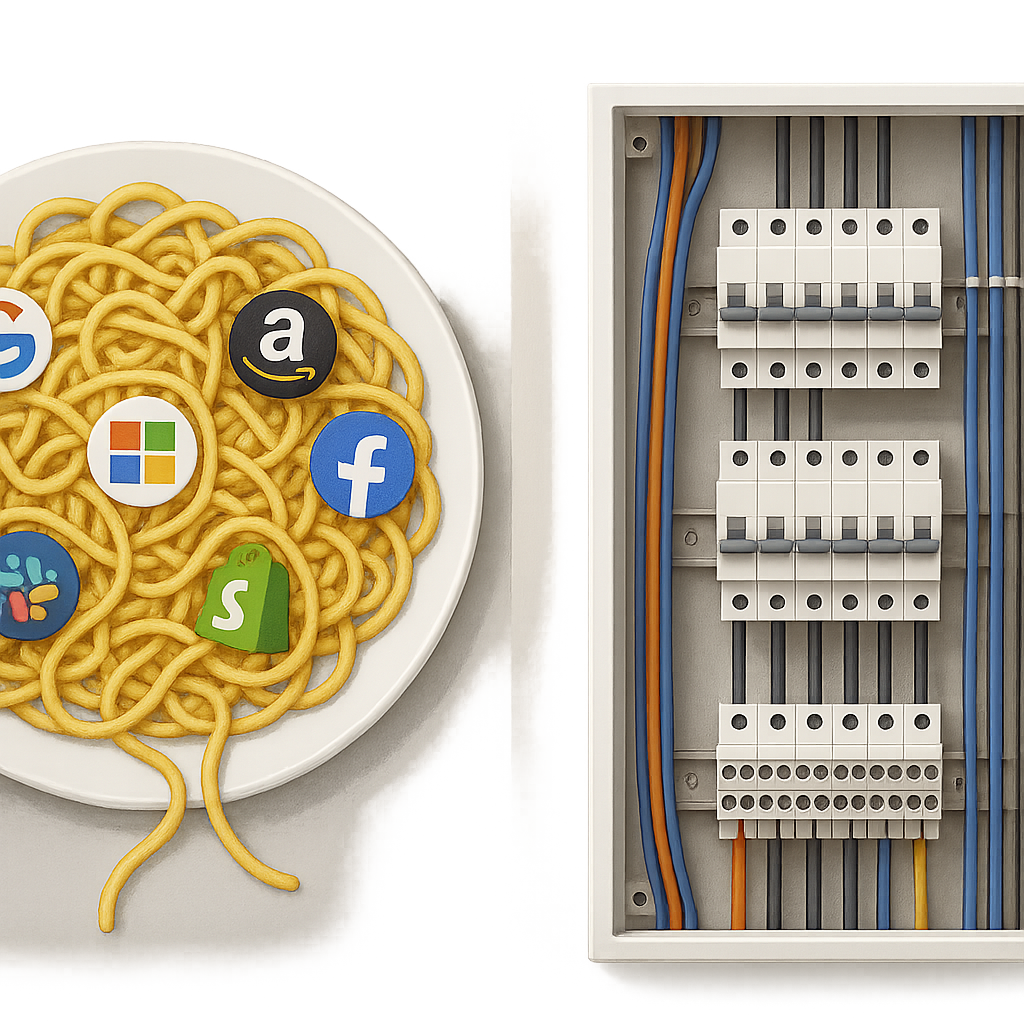
Someone asks a seemingly simple business question: “How many leads from our last marketing campaign became customers who paid their first invoice on time?” Answering it should be easy, but it takes three days and involves two analysts manually cross-referencing spreadsheets exported from Salesforce, Marketo, and NetSuite. Does this sound familiar?
This isn’t a failure of your people; it’s a failure of your architecture. A perspective forged through decades of untangling enterprise systems suggests most companies don’t design a bad integration strategy; they simply don’t design one at all. They fall into the trap of point-to-point connections.
It starts innocently. The sales team needs customer data from the CRM in the ERP, so a developer builds a direct link. Then, marketing needs another connection. Then another. After a few years, you don’t have an architecture; you have a plate of spaghetti. It’s a tangled, brittle, and undocumented mess of custom connections where every system is precariously tied to every other system.
The True Cost of Spaghetti Integration
This spaghetti architecture isn’t just messy; it carries immense strategic costs.
- Extreme Brittleness. The entire structure is incredibly fragile. When the CRM vendor pushes a mandatory API update, a dozen custom connections across multiple departments can break overnight, causing widespread operational chaos.
- Zero Visibility. There is no central place to monitor the health of your data flows. Troubleshooting becomes a painful exercise in digital archaeology, trying to trace a single piece of data through a dozen tangled strands.
- A Tax on Agility. Want to add a new best-of-breed tool to your stack? With a spaghetti architecture, you have to budget for building a whole new set of custom point-to-point connections. This slows down innovation and makes the business hesitant to adopt new technology.
Building a Switchboard, Not Spaghetti
The alternative is to think like a systems architect. Instead of cooking spaghetti, build a proper switchboard. A modern integration platform (often called an iPaaS) acts as this central hub. Each system (your ERP, CRM, HCM) plugs into the switchboard once. The platform then handles the complex work of routing, translating, and monitoring the data flow between them.
A messy integration architecture isn’t just a technical problem; it’s a direct drag on your company’s speed and intelligence. Stop adding another strand to the plate of spaghetti. It’s time to invest in a switchboard.
To discuss untangling your systems, let’s connect on LinkedIn.